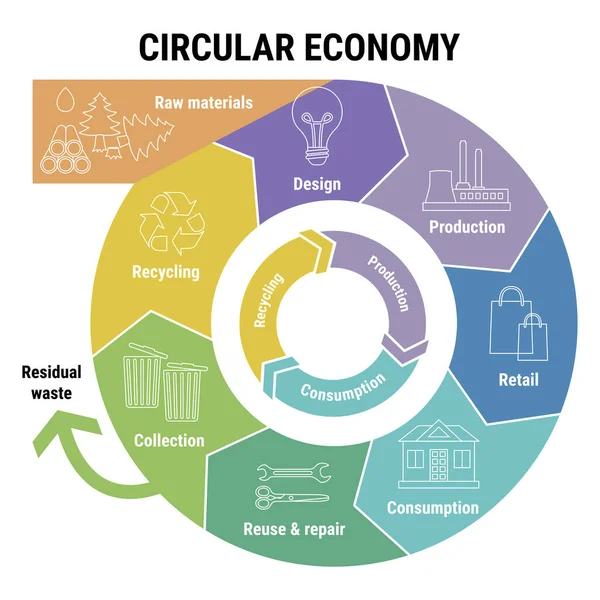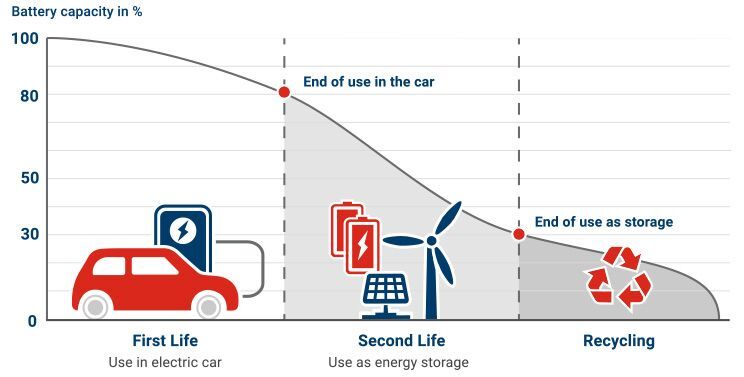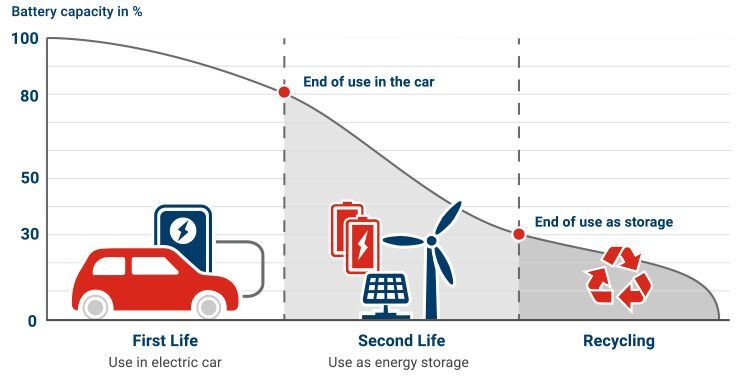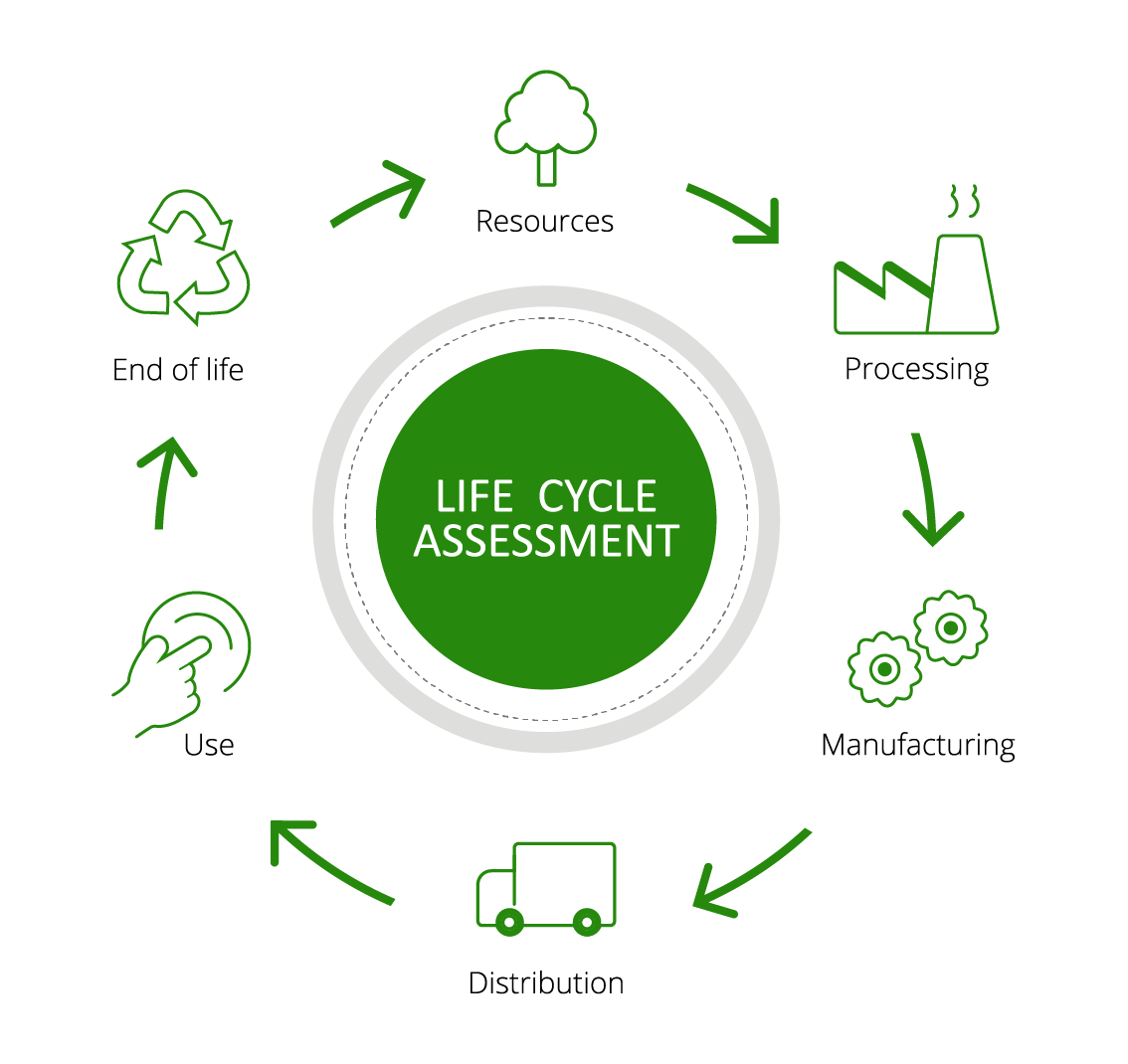Background and Relevance
To future proof our society we should aim to restrict and encourage companies to be less wasteful and more mindful but also change our mindsets as consumers. Taking steps towards reaching a circular economy, where we see each product for its material value and environmental cost, keeping resources in use through reusing, repairing, and reselling would help reduce embedded emissions in the first place[5]. However, in the meantime we need to aim to mitigate embedded emissions as much as possible by recycling and recovering everything we can[4][5].
Recycling has its own array of issues from logistical challenges to storage concerns and intrinsic energy consumption[1][2]. However don’t let this get you down, recycling has a multitude of advantages that offset this: lower emissions than production from scratch: less need for landfill/incineration and reduced mining and manufacture demand via resource preservation[4].

Circular Economy – Source: Deposit Photos [9]

Second Life for EV Batteries – Source: BatteryDesign.net [3]
A Second Life?
In the context of electric vehicles ESOI – Energy stored over energy invested – can be determined to judge the different environmental impacts of the vehicle batteries. Improving these values is key in making EVs even more environmentally attractive over ICEVs[1][2]. The first method for this is to use the batteries in a second application where performance is less crucial, once their capabilities have dropped below a certain threshold[3]. These second use applications provide an additional revenue stream that can potentially offset the cost of the batteries eventual recycling. Since these batteries still retain 70% – 80% capacity at the end of their vehicles life cycle this seems to be a no brainer[2]. However widespread adoption of these uses is difficult due to the complex nature of transporting and storing large batteries. Some current examples include: Renewable energy storage, back up power packs and EV charging station energy buffers[2][3].

Life-Cycle Assesments
This is an examination of all stages of a products life, to determine the environmental cost of said product[6]. The goal of this technique is to shed some light on a products true environmental impact, helping to shape sustainability and mitigation strategies[6][7].
Methodology[7]
- Define the scope of the assessment –
- Determine and research process inputs and outputs ( energy consumption, emissions and material use)
- Determine the environmental impact of determine inputs and outputs
- Analyse results and draw conclusions of the environmental performance
LCAs are ideal way to asses a products environmental impact in a standardised and quantitative way[6][7]. Authorised third party services exist to determine a products LCA in an unbiased manor – such as Greenly[8].

Life Cycle Assesment Stages – Source: Medium.com [6]
Get in Touch with Us!
We’d love to hear from you. Whether you have feedback, suggestions, or want to share insights related to sustainability and environmental truth, your voice matters. At Earth Athenaeum, we believe in open dialogue and collaboration to uncover and explore the realities behind green initiatives and corporate claims.
If you have questions, ideas, or simply want to connect, feel free to reach out — we’re here to engage, listen, and learn together.
Reference List And Further Reading
[1] – Harper G, Sommerville R, Kendrick E, Driscoll L, Slater P, Stolkin R, et al. Recycling lithium-ion Batteries from Electric Vehicles. Nature [Internet]. 2019 Nov 6;575(7781):75–86. Available from: https://www.nature.com/articles/s41586-019-1682-5
[2] – Moseman A, Olivetti E. How Well Can Electric Vehicle Batteries Be recycled? [Internet]. MIT Climate Portal. 2023. Available from: https://climate.mit.edu/ask-mit/how-well-can-electric-vehicle-batteries-be-recycled
[3] – Aditya_Dhage. Second Life of Batteries for Electric Vehicles [Internet]. Battery Design. 2022. Available from: https://www.batterydesign.net/second-life-of-batteries-for-electric-vehicles/
[4] – United States Environmental Protection Agency. National Overview: Facts and Figures on Materials, Wastes and Recycling | US EPA [Internet]. United States Environmental Protection Agency. 2024. Available from: https://www.epa.gov/facts-and-figures-about-materials-waste-and-recycling/national-overview-facts-and-figures-materials
[5] – Ellen MacArthur Foundation. Circular economy introduction [Internet]. Ellen MacArthur Foundation. 2022. Available from: https://www.ellenmacarthurfoundation.org/topics/circular-economy-introduction/overview
[6] – Gupta A. Life Cycle Assessment: Explaining the importance of life cycle assessments in sustainable design and how they help reduce a project’s ecological footprint. [Internet]. Medium. 2024. Available from: https://medium.com/@ayasyagupta417/life-cycle-assessment-explaining-the-importance-of-life-cycle-assessments-in-sustainable-design-311993178f0c
[7] – Quist Z. Life Cycle Assessment (LCA) – Complete Beginner’s Guide [Internet]. Ecochain. 2024. Available from: https://ecochain.com/blog/life-cycle-assessment-lca-guide/
[8] – Greenly: Switch to digital carbon accounting – Greenly [Internet]. Greenly.earth. 2025. Available from: https://greenly.earth/en-gb/
[9] – 225,071 Circular economy Vector Images [Internet]. Depositphotos. Available from: https://depositphotos.com/vectors/circular-economy.html
